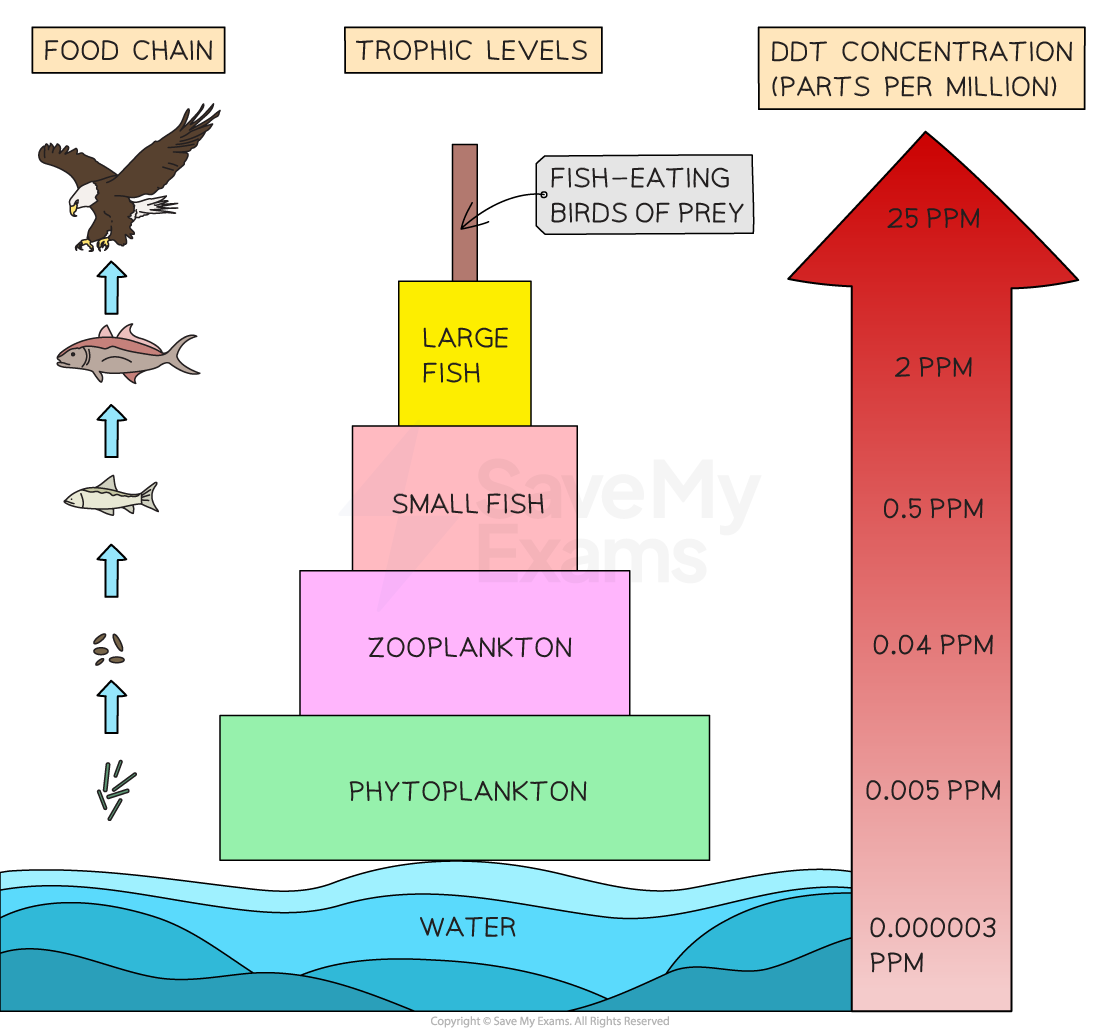Syllabus Edition
First teaching 2015
Last exams 2025
What is Bioaccumulation & Biomagnification? (DP IB Environmental Systems & Societies (ESS)): Revision Note
Bioaccumulation & Biomagnification
Bioaccumulation is the build-up of persistent or non-biodegradable pollutants within an organism or trophic level because they cannot be broken down
This means that organisms at higher trophic levels (such as top predators) may accumulate higher concentrations of pollutants than those at lower trophic levels
Biomagnification is the increase in the concentration of persistent or non-biodegradable pollutants along a food chain
As pollutants are passed up the food chain from one trophic level to the next, they can become more concentrated due to the decrease in total biomass of organisms at higher trophic levels
Toxins such as DDT (dichlorodiphenyltrichloroethane) are persistent pollutants that can accumulate along food chains
DDT was a widely used insecticide in the mid-20th century that was found to have harmful effects on birds of prey such as eagles and falcons
When DDT was sprayed on crops, it would leach into waterways and eventually enter freshwater and marine ecosystems
DDT would then enter food chains (via plankton) and accumulate in the bodies of fish
These fish would then be eaten by birds, which would accumulate higher concentrations of DDT
Because DDT is persistent and does not break down easily, it can continue to accumulate in the bodies of animals at higher trophic levels, leading to harmful effects such as thinning of eggshells and reduced reproductive success

Through the process of biomagnification, the concentration of DDT in the tissues of organisms increases at successively higher trophic levels in a food chain
Mercury is another example of a pollutant that can accumulate along food chains
Mercury is released into the environment through activities such as coal-fired power plants and gold mining
Once in the environment, mercury can be converted into a highly toxic form called methylmercury, which can accumulate in the bodies of fish
As larger fish eat smaller fish, the concentration of methylmercury within the tissues of these fish increases, leading to potential harm for humans who eat large predatory fish such as tuna or swordfish
In 1956, for example, a chemical factory released toxic methylmercury into waste water entering Minamata Bay in Japan
Mercury accumulation in fish and shellfish caused mercury poisoning in local people (who ate the fish and shellfish) and resulted in severe symptoms (paralysis, death, or birth defects in newborns)

Biomagnification and bioaccumulation of a pesticide in an aquatic ecosystem

Unlock more, it's free!
Did this page help you?